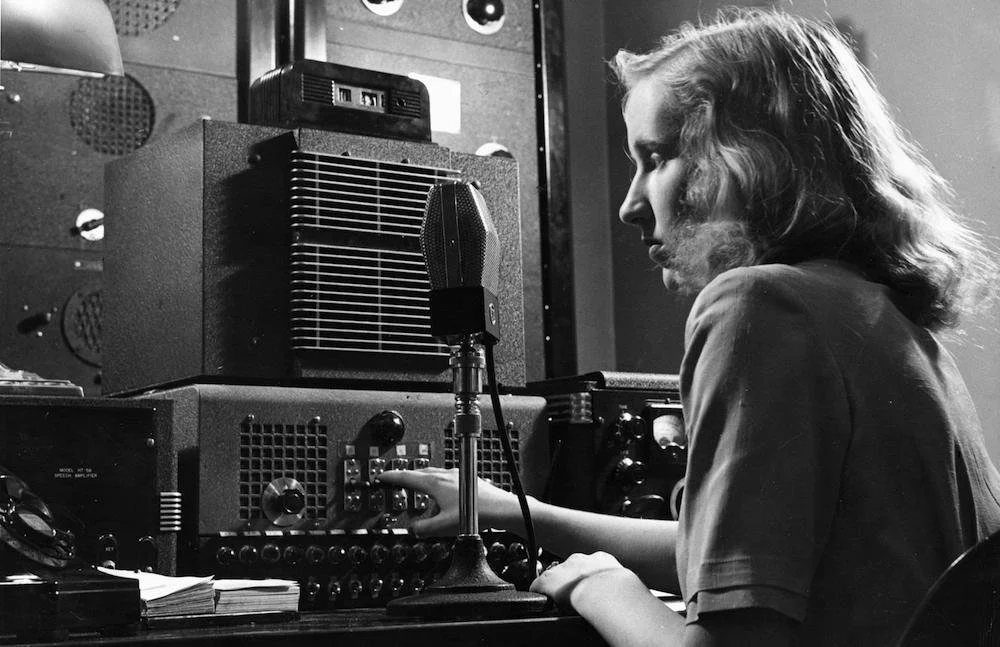Anny Ondra was a major, international star, born in Bohemia. She faced many obstacles to get to such a status, such as major pressure from her family over many years. Still, she prospered and how she wanted. By the end of her life, she married and starred in over 90 films.
Irena Bernášková and the Fight for Czechoslovak Independence
Irena Bernášková, the second of Vojtěch Preissig’s three daughters, started her life in Boston, after being born in Prague, before returning to what was now Czechoslovakia. It was at this moment that she dedicated her life to writing and publication, particularly to resist the Nazi occupation. Although her relationship with her father initially splintered, it eventually mended as the two published a resistance magazine, V boj.
Running from Trouble and Rising to Success: Jan Antonin Bata and the Bata Shoe Company
Radio Revolution
Radio and its revolutionary effect were felt in Czechoslovakia just as it was in the rest of the world. It began with the first broadcasts, occurring before World War I, into the first Czech-produced program in late 1919. Of course, as radio technology progressed and advanced, its use as a medium for propaganda grew more and more robust. Despite its use in propaganda, radio also served as a tool to disseminate important information about the nation and the world at-large.
Karel Zeman: Czech Film Director and Animator
Legendary Czech film director, screenwriter, artist, and animator, Karel Zeman is known for creating fantasy and science fiction films. His first major breakthrough occurred in 1943 while participating in a window-dressing competition in Brno, where he accepted a job offer to work for the Bata Film Studios in Zlin. After that, in 1945, Zeman began work on A Christmas Dream, then directed his first feature film, The Treasure of Bird Island, in 1952. His work is illustrious enough for a museum dedicated to his work, the Karel Zeman Museum in Prague.
Vlasta Adele Vraz : A Czech-American during Communist Czechoslovakia
Vlasta Adele Vraz was a Czech-American who served as the director of American Relief for Czechoslovakia after World War II and was arrested as a spy by the Communist government in Czechoslovakia. She was released, becoming the president of the Czechoslovak National Council of America. She spent most of her life before World War II surrounded by writers and writing for her family’s newspaper, the “Svornost.” After her release, she continued as an editor for the American Bulletin and Vestnik before she died in 1989.
Tomáš Masaryk and the United States
Tomáš Masaryk, first president of Czechoslovakia, was inspired by the freedom and democracy of the United States. While negotiating for Czechoslovakia’s independence, Masaryk developed not only political relationships, but also personal and intellectual ones with the United States. During the First World War, he was exiled after siding with the Allied Powers, but did not give up on garnering support from his fellow Czechoslovakians. The Lansing Declaration of May 1918 was one of many important moments in the future creation of the Czechoslovak Republic, which eventually came to pass, all before he died in 1937.
Frantiska Plaminkova
Františka Plamínková, founder of the National Council of Women, was a trailblazer in feminism and women's rights. Her fight for women's suffrage and self-personhood was a long one, beginning in 1903 with the Czech Women's Club. Sadly, she was one of many executed by the Nazis in retaliation to Reinhard Heydrich's assassination. Milada Horakova continued Plamínková's work.
Hans Krasa and Terezin
Born in 1899, Krasa was a young musical prodigy who composed his first songs at the age of ten. By the age of 39, he would compose his most famous song, Brundibar. By the age of 40, in 1939, the occupation of Czechoslovakia by Nazi Germany took place. After their occupation, Krasa was arrested by the Nazis and deported to the Terezin concentration camp, forced to compose as a part of a propagandic smokescreen.
National Uprising Day
Kamil Kubik: Impressions
Kamil Kubik grew into an internationally recognized artist from a rough beginning to his life, having to escape his home in 1948 due to radical political changes. He's most famous for his cityscape paintings, including paintings of Central Park, Prague, London, and the White House, along with a scenic painting from nearly every state in the United States. He became the official artist for the White House.
Milada Horakova
Milada Horakova was an advocate for democracy, stuck between both the Nazis and Communists for her adult life. During the Nazi occupation of Czechoslovakia, she resisted, helping emigrants escape and harboring fugitives of the occupiers. Although she faced torture and death from the Nazis, she not only survived but also continued her same fight, this time with the Soviets. Sadly, she was sentenced to death and executed, even when eminent individuals of the time demanded her release.












